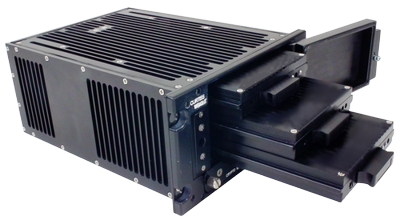Curtiss-Wright Introduced Packet Capture Software for Vortex Data Transport System
Designed for use in network-enabled mobile vehicle in harsh aerospace/defense environment
This is a Press Release edited by StorageNewsletter.com on April 30, 2015 at 3:07 pmCurtiss-Wright Corporation announced that its Defense Solutions division has introduced a packet capture software (PCAP) option to enhance its Vortex Data Transport System (DTS).
Believed to be the first time that the PCAP functionality, compatible with WireShark software, has been offered in a rugged commercial-off-the-shelf (COTS) NAS subsystem, this Ethernet recording capability enables Vortex DTS users to record all Ethernet packets flowing over a vehicle’s LAN during the course of a mission. While using DTS as a Network File Server (NFS), it can also be used to record network traffic for later analysis. Designed for use in network-enabled mobile vehicles deployed in harsh aerospace and defense environments, Vortex DTS supports a wide operating temperature range and high levels of shock and vibration.
“With the addition of its new PCAP packet capture capability, our rugged Data Transport System solution delivers more capabilities and an expanded value proposition for system integrators and flight test instrumentation engineers,” said Lynn Bamford, SVP and GM, defense solutions division. “It now combines its already industry-leading critical storage and protection features with Ethernet sniffing functionality to enable recording and network analysis of each and every packet transferred over a mobile vehicle’s LAN during a mission.“
Vortex DTS
Unlike competing systems that use proprietary memory devices, Vortex DTS uses commercial off-the-shelf 2.5″ SATA solid state drives. This data transport system is built rugged as required for use in aircraft, ground vehicles, and ships. It’s integrated into Network Centric systems, providing a SWaP-optimized NFS. It is ideal for rugged applications that require the storage, removal, and transport of critical data such as cockpit data (mission, map, maintenance), ISR (camera, I&Q, sensors), mobile applications (ground radar, ground mobile, or airborne ISR pods), heavy industrial (steel, refinery), and video/audio data collection (flight test instrumentation).
Leverages standard 2.5″ SATA SSDs
The Vortex DTS’ Removable Memory Cartridge (RMC) was designed to mitigate obsolescence and support extreme insertion cycles. Based on industry standard 2.5″ SATA SSDs, the DTS’ RMC leverages the industrial base enabling use of any widely available 2.5″ SSDs. To support the long-lifecycle requirements of typical military programs, the RMC is designed for high-insertion applications with a non-proprietary 100,000 insertion cycle connector to ensure reliable operation mission after mission.
With a variety of SSDs, the DTS memory can be scaled to meet the application needs. Each disk consumes two Watts of power and weighs only 0.7 pound (317 grams). An RMC is small enough to fit in a shirt or flight-suit pocket and yet rugged enough for transport. Error correction, wear-leveling, and bad block management are performed to ensure data integrity. Over-provisioning sets aside 7% of the NAND flash memory for these functions. SSDs can be provided by Curtiss-Wright, or optionally, an empty RMC can be purchased and the customer’s own SSD can be used. The RMC can be removed from any Vortex DTS and installed ito any other model of Vortex DTS to provide full transfer of data between one or more networks in separate locations.
Support for secure data-at-rest
The Vortex DTS is designed to support demanding military applications that require secure data-at-rest. To ensure the security of critical data, all data is passed through the FIPS 140-2 certified in-line media encryptors prior to being read from or written to a removable memory cartridge (RMC). The Vortex DTS encryption capability is modular allowing options for no encryption if the data is not sensitive. The standard Vortex DTS encryption module incorporates AES256-bit cryptographic algorithm and hardware that are NIST validated to FIPS 140-2. The encryption key can be passed to the encryption module by an outside agency or special key management concepts can be developed depending on the application.













 Subscribe to our free daily newsletter
Subscribe to our free daily newsletter
